Have you ever looked forward to a weekend joy ride only to find yourself shifting, stretching and waiting for your next stop? Many people seem to agree. An online survey in 2018 found that over 66% of motorcyclists in India reported experiencing wrist pain during rides, highlighting how common physical discomfort can be among riders. Furthermore, as every rider knows, comfort-related issues such as fatigue, poor posture and muscle strain can severely reduce focus, reaction times and overall safety. Figuring out how to make your motorcycle more comfortable is essential for preventing these problems both on short trips and long-distance tours. Therefore, this guide explores practical, rider-approved methods to increase motorcycle comfort and ensure a smoother, safer and more enjoyable experience on two wheels.
Keep reading to learn how to improve your comfort on a motorcycle with ergonomic adjustments, strategic gear upgrades and more!
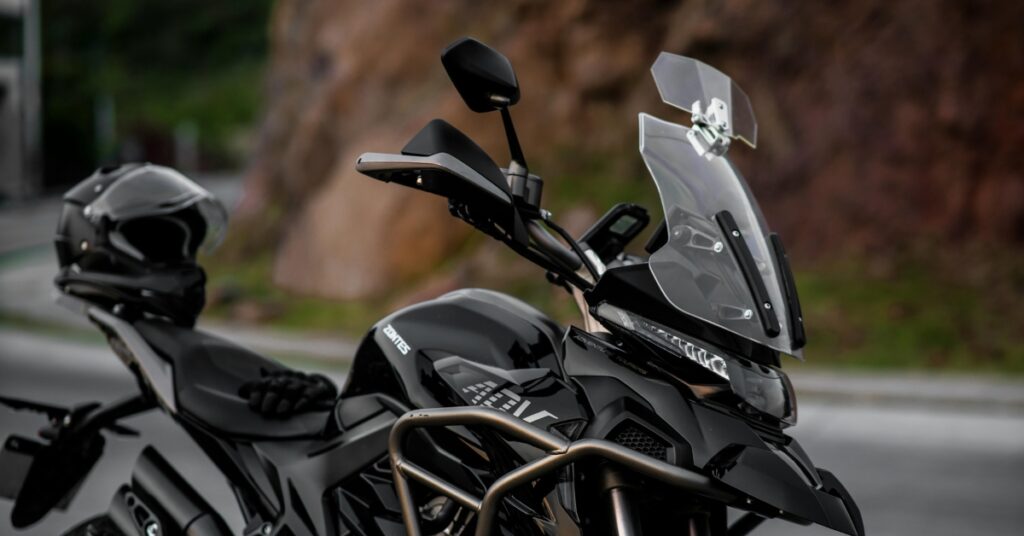
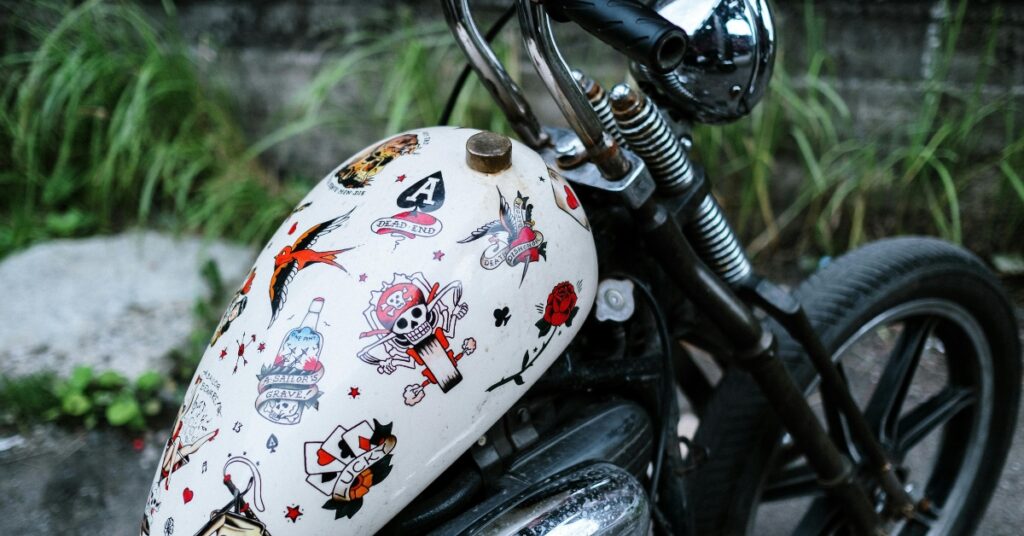
How to Make Your Motorcycle More Comfortable: Why Rider Comfort Matters
Being comfortable on a motorcycle is not just about luxury — it is essential for rider health, safety, and long-term enjoyment. Understanding how to make your motorcycle more comfortable leads not just to better performance, but also fewer physical issues. After all, I’d imagine all of us want to be out and about on the bikes well into our 80’s! So, why does being comfortable matter?
- Enhances enjoyment: Comfort allows riders to fully immerse themselves in the experience without being distracted by pain or discomfort. The joy of riding a motorcycle should not be marred by constant shifting and adjusting due to discomfort.
- Reduces fatigue: Poor ergonomics and gear can cause premature exhaustion, reducing concentration and reaction time. Long hours on the road without adequate comfort can lead to mental and physical exhaustion, affecting your overall safety.
- Prevents long-term injuries: Consistent discomfort can lead to cumulative issues such as chronic back pain, wrist strain, or knee problems. Motorcycle riding involves repetitive movements, which, if not addressed with proper adjustments, can result in long-term discomfort or injury.
- Improves safety: A fatigued or uncomfortable rider is less responsive and more prone to making critical mistakes. Proper comfort allows you to stay alert and handle any unexpected situations that may arise on the road.
- Encourages longer rides: Greater comfort directly increases endurance, allowing riders to tackle more ambitious journeys with confidence. You’ll feel less inclined to stop prematurely or cut your trips short due to discomfort, giving you more time to explore and enjoy the road.
Addressing these factors is the first step toward unlocking the true potential of every ride!

Ergonomic Adjustments for a Better Fit
One of the most effective ways to improve motorcycle comfort, and possibly the best place to start, is through ergonomic adjustments. Positioning yourself on your bike correctly through small changes can drastically transform how you feel during and after a ride. Because motorcycles come in various shapes and sizes, including a multitude of accessories, take the time to match your bike to your body (not the other way around!). A few simple changes you can do are:
- Adjust handlebars and levers: Find the correct angle for your natural wrist position to minimize strain and improve control. Handlebars that are too high or too low can force you into unnatural positions, causing discomfort over time. Consider installing adjustable risers or changing the bar style to suit your body type.
- Seat customization: Consider investing in a gel seat, sheepskin cover, or fully custom seat tailored to your riding style. A seat that is too hard or too soft can cause discomfort on longer rides. Gel seats provide pressure relief, while sheepskin offers breathability and comfort.
- Foot peg positioning: If adjustable, reposition pegs or install lowering kits to reduce knee and hip tension. Many riders find that their knees and hips can become stiff on long rides due to poor peg placement. Adjusting them to a more natural position can alleviate this.
- Back support: Install an aftermarket backrest or explore seat options with built-in lumbar support for longer rides. A backrest helps maintain posture, preventing lower back pain that can become a major issue during long-distance riding.
- Handlebar risers: These inexpensive upgrades can raise or move handlebars closer to the rider, preventing neck and shoulder pain. Riders with shorter arms may find that risers can help improve comfort significantly, giving them better reach and less strain.
Proper ergonomics significantly enhance both short and long-distance rides. Most importantly, I would say, is having a think about your riding style. Are you just zipping around here or there, or are you sitting upon your bike for hours at a time? Investing in ergonomics is always worth it, but you can get away with less if it is only an occasional ride you’re doing compared to multi-day tours.
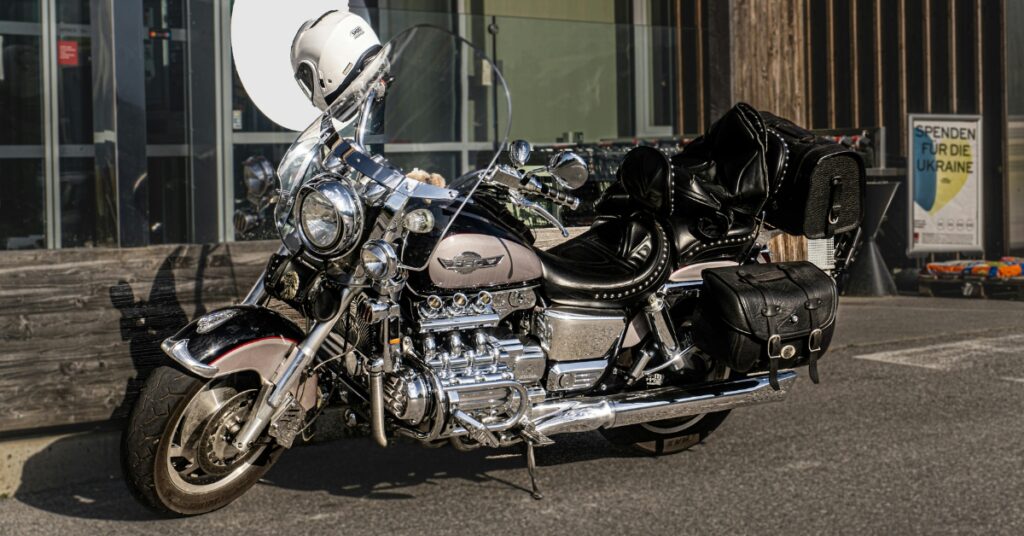
Upgrading Your Gear for Ultimate Comfort
Your riding gear is a crucial factor in comfort. Properly selected clothing and accessories can make a big difference in how comfortable you feel during rides. Moreover, the more comfortable you feel, the more likely you are to wear all the recommended motorcycle safety gear! Here are several easy changes you can look into:
- Invest in a lightweight helmet: A well-fitting helmet is essential for comfort. Look for lightweight options that won’t add unnecessary strain to your neck, especially on long rides. When considering a helmet for touring, make sure to test it out as thoroughly as you can to prevent mishaps away from home.
- Wear moisture-wicking clothing: Wearing breathable, moisture-wicking fabrics will help regulate your body temperature and prevent chafing during long rides. Heavy, non-breathable fabrics can trap sweat and heat, leading to discomfort. Technical fabrics designed for motorcycling provide comfort and performance.
- Choose a suitable jacket: A well-fitting jacket not only protects you from the elements but also reduces wind resistance, contributing to comfort at higher speeds. Make sure you purchase a jacket that is tailored to your body type. For example, unisex jackets do not take into account the physical proportions of a woman, and are often smaller versions of men’s jackets only.
- Gloves and boots: Riding gloves with proper padding and boots with ankle support will prevent discomfort and give you better control. The right gloves can reduce hand numbness and improve grip, while boots with the correct arch support can prevent foot fatigue.
- Weather-appropriate gear: Whether it’s a cooling vest for hot days or a heated jacket for the cold, always choose gear that’s suited for the conditions. Properly designed weather gear keeps your body at a stable temperature, preventing discomfort from either heat or cold.
Upgrading your gear with these considerations can drastically improve your comfort on the road, giving you the freedom to ride longer and with greater focus. Personally, I am not a fan of motorcycle safety gear as I find it tedious to put on and take off, as well as constantly feeling like I am overheating. As the eternal passenger, I am slowly combing through this list myself – a comfy yet attractive (I hope!) jacket is next on my list to upgrade.

Suspension and Tires: The Foundation of Comfort
The suspension and tires of your motorcycle are directly responsible for how smooth your ride is, especially on uneven roads or long tours.
- Adjust suspension settings: Tailoring your suspension settings to your weight and riding style can reduce bumps and jolts, providing a smoother experience. If your motorcycle has adjustable suspension, ensure it is set correctly for your personal weight and riding conditions. This will help absorb road imperfections and improve ride quality.
- Upgrade to high-quality shocks: Aftermarket shocks can offer better adjustability and comfort compared to stock components. Shocks with greater rebound damping or preload adjustments will give you better control and more comfortable handling.
- Check tire pressure regularly: Proper tire inflation is key to both safety and comfort. Under-inflated tires can lead to a harsh ride and poor handling. Be sure to check tire pressure before every ride to ensure optimal comfort and safety.
- Consider touring tires: These tires are designed for long-distance comfort, providing more stability and absorbing road imperfections better than sport tires. Touring tires feature a softer rubber compound, which increases grip and cushioning, enhancing comfort over long distances.
Suspension and tire upgrades are essential when considering how to make your motorcycle more comfortable. Well-maintained suspension and properly inflated, high-quality tires make a significant difference in ride quality.
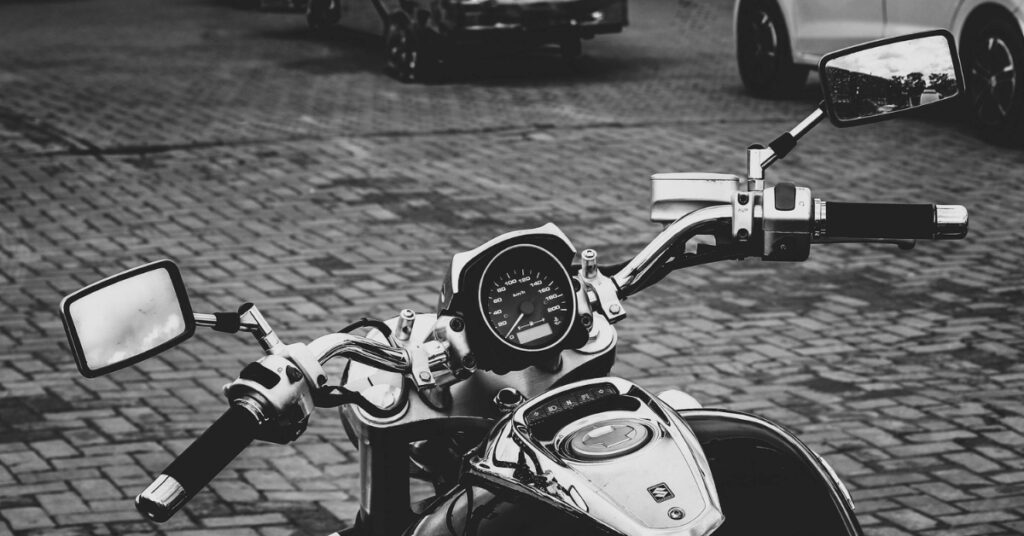
Take Care of Your Body: Fitness for Riding
Maintaining a strong and flexible body can also impact your comfort on the bike. The right level of fitness helps reduce the physical strain that riding can put on your body.
- Strengthen your core: A strong core will help you maintain good posture while riding, reducing back and neck pain. Core exercises, such as planks and leg raises, build endurance and provide stability during long rides.
- Stretch regularly: Stretching your hamstrings, quads, and lower back can keep muscles relaxed and flexible, preventing stiffness. Incorporating yoga or dynamic stretches into your routine can help your body stay limber and reduce muscle tightness.
- Improve your grip strength: Strong forearms and wrists help maintain control of the bike for longer periods, reducing fatigue. Grip-strengthening exercises, like squeezing a tennis ball, can make a noticeable difference in your comfort and handling during rides.
Keeping your body in top shape will complement your bike adjustments, ensuring you stay comfortable for hours on the road. As the eternal passenger, I would add here that maintaining correct passenger riding ergonomics is just as important as having a fit rider. Although you have a back rest (I hope), sitting slumped on the back due to a weak core does you no good. Regular exercise, stretching, and proper posture are essential elements of staying fit for riding.
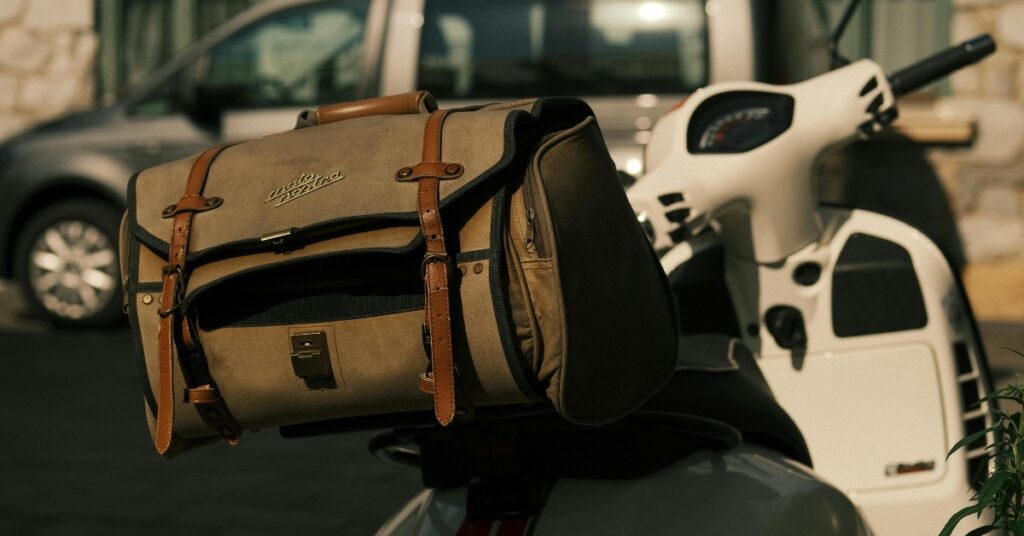
Motorcycle Luggage: Making the Journey Comfortable
If you’re planning a long trip, your luggage choices play a big role in your comfort. Improper storage can result in awkward weight distribution, affecting your balance and overall comfort.
- Choose soft saddlebags: These bags distribute weight evenly, minimizing the impact on handling and comfort. Soft saddlebags are lighter and conform better to the shape of your bike, helping to keep the weight distribution balanced and comfortable.
- Consider a tank bag: Tank bags are great for easy access to essentials while riding, helping to balance the load. Tank bags also prevent overloading your rear end, which could make your bike feel less stable.
- Look for weather-resistant bags: Protection from rain ensures that your gear stays dry and comfortable throughout your journey. Waterproof luggage will prevent your belongings from getting wet, reducing the discomfort that comes with wet gear.
I would, once again, add that having an uncomfortable passenger will reduce your overall experience even as a rider. The luggage positioning should allow enough breathing room for your passenger, and make sure their back contacts a soft surface. As the eternal passenger, having your spine slammed against a hard surface with every acceleration can be quite unappealing!
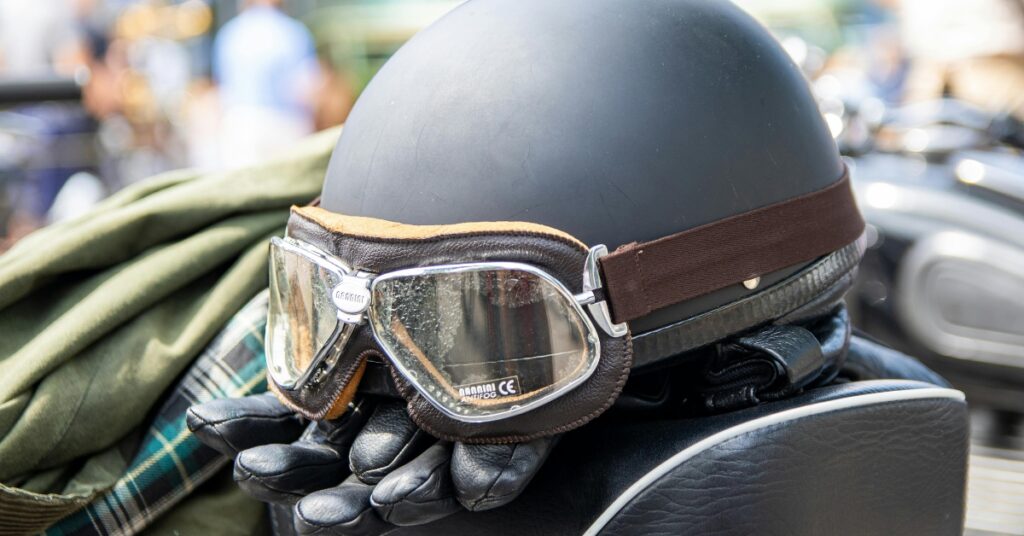
FAQ: How to Make Your Motorcycle More Comfortable
Q. Can tire pressure affect how comfortable a motorcycle feels?
A. Yes. Tire pressure plays a significant role in ride quality. Over-inflated tires can make a motorcycle feel harsh and unforgiving on rough surfaces, while under-inflated tires can lead to poor handling and excessive heat build-up. Keeping tires properly inflated according to the manufacturer’s specifications ensures a smoother, more predictable ride and minimizes unnecessary jolts that cause rider fatigue.
Q. How does wind protection impact comfort when riding a motorcycle?
A. Wind fatigue refers to the physical exhaustion riders experience from prolonged exposure to wind pressure while riding. Over time, the force of wind creates resistance against the body, causing muscle strain in the neck, shoulders, arms and core as the rider works to maintain balance and posture. Installing a properly sized windshield or windscreen helps to deflect air around the rider, rather than directly against them. Riders can also consider aerodynamic hand guards, fairings and even specialised riding gear designed to cut through wind more efficiently.
Q. What are the most important adjustments for a comfortable passenger?
A. As the eternal passenger, I am a great advocate for some type of back rest. Consider anything from a conventional back rest, to a tail box with padding, to even a soft luggage bag tied down. Without these, every time your rider accelerates, you need to hold on tightly otherwise risk being flung off the back (which has almost happened to me when cruising on a highway around Lake Como!). Next, I would install some form of padding adjacent to the passenger’s spine if the motorcycle does not have a conventional back rest. I have stick-on DIY padding added into the tail box of our bike which works great – for short rides around town at least!
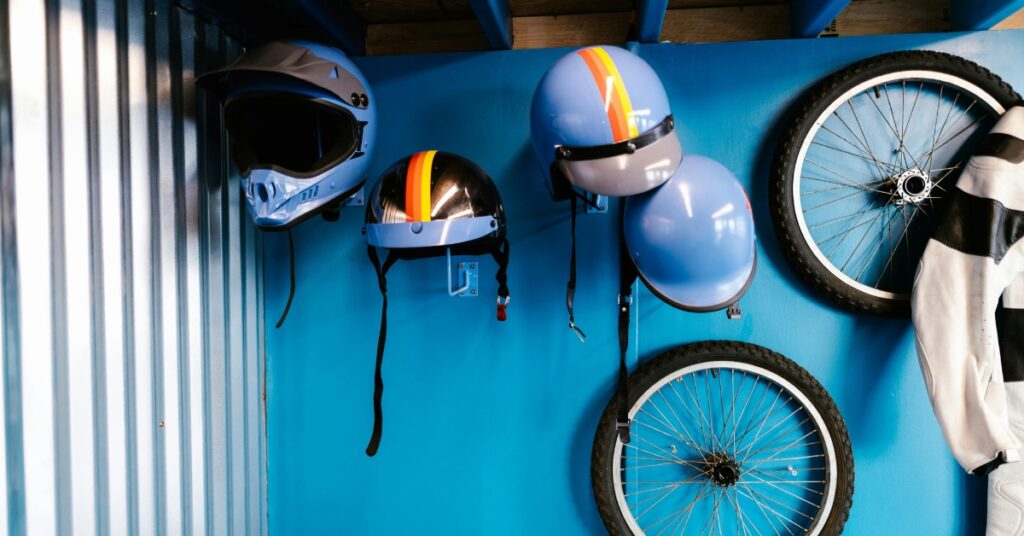
Final Thoughts
Comfort is not just about luxury — it is about safety, endurance, and enjoyment. Learning how to make your motorcycle more comfortable transforms every ride from a physical challenge into a truly rewarding experience. From customising ergonomics and upgrading your seat to choosing the right riding gear and lightweight luggage solutions, each adjustment brings you closer to a better ride. For even more ways to optimise your motorcycle adventures, explore our in-depth guides on lightweight helmets, women’s motorcycle jackets, motorcycle luggage options, and passenger riding comfort. Your next comfortable ride awaits — start making the changes today.





